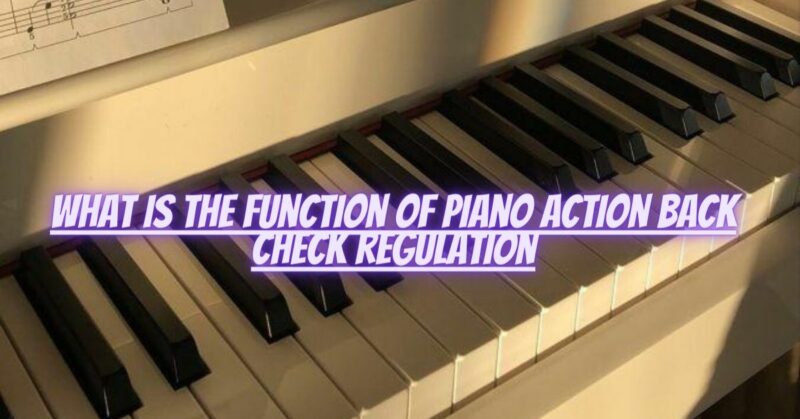Piano action back check regulation is a crucial aspect of maintaining the proper functionality and performance of a piano. The back check is a mechanism located near the hammer shank and is designed to control the return of the hammer after it has struck the string. The back check ensures that the hammer rebounds quickly and does not rest on the string, allowing for the repetition of notes and enabling fast and precise playing. Proper back check regulation is essential to achieve a responsive and consistent piano action. Here’s a detailed explanation of the function of piano action back check regulation:
1. Hammer Reset: After the hammer strikes the string, the back check prevents the hammer from staying in contact with the string. When you release the key, the back check lifts the hammer and resets it to its resting position, ready for the next keystroke. This quick resetting is crucial for playing fast passages and repeating notes rapidly.
2. Avoiding Double-Striking: The back check prevents the hammer from bouncing back and striking the string a second time when you release the key slowly or play with a light touch. This function ensures that only one clear note is produced for each keystroke.
3. Repetition Speed: The back check’s regulation affects the repetition speed of the piano. Properly regulated back checks allow for quick repetition of notes without any interference, allowing pianists to play rapid passages with accuracy and control.
4. Key Release Sensitivity: Back check regulation also influences the sensitivity of key release. A well-regulated back check provides the right amount of resistance when you release the key, contributing to a more expressive and nuanced performance.
5. Overall Piano Action Response: The back check is an integral part of the entire piano action system. Its proper regulation ensures that the piano action is well-balanced, responsive, and consistent across all keys. This contributes to the overall playability and feel of the instrument.
Regulating the Back Check: Back check regulation involves adjusting the back check wires or screws to achieve the desired level of control and response. This process requires precision and should be done by a qualified piano technician who has the necessary tools and expertise.
Maintenance and Care: Regular maintenance and periodic regulation of the back check are essential to keep the piano action in optimal condition. As part of routine piano servicing, a technician will inspect and adjust the back checks, along with other action components, to ensure the piano continues to perform at its best.
In conclusion, piano action back check regulation plays a vital role in the instrument’s performance. It ensures smooth hammer reset, prevents double-striking, enables fast repetition, and contributes to the overall responsiveness of the piano action. With proper regulation and maintenance, the back check ensures that pianists can achieve their desired expression and artistry, making the piano a versatile and expressive instrument.


